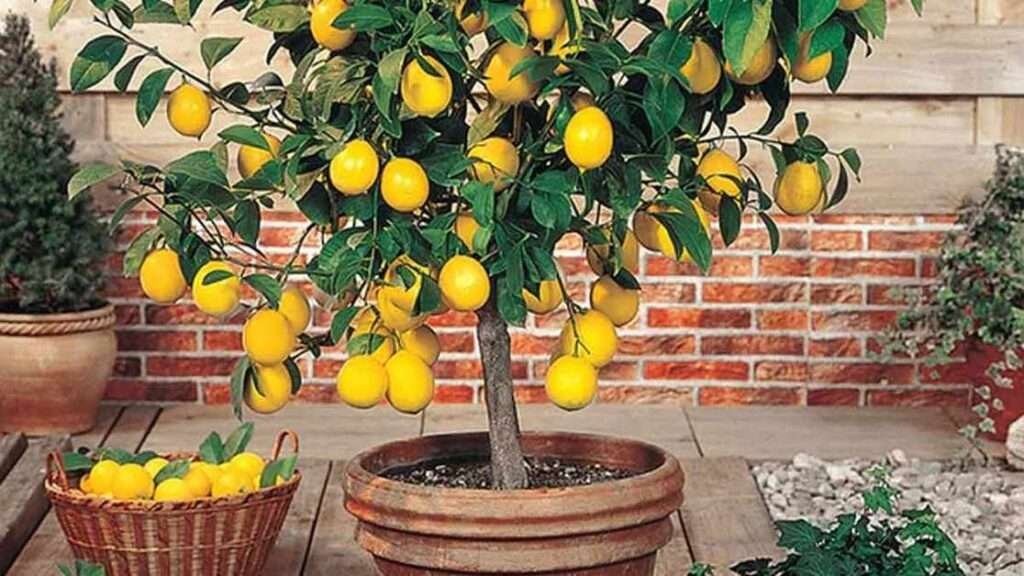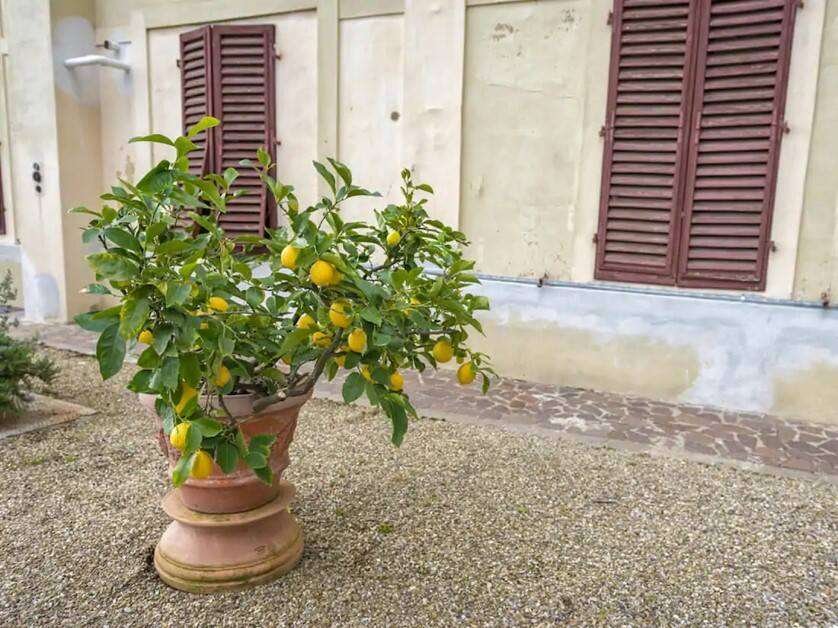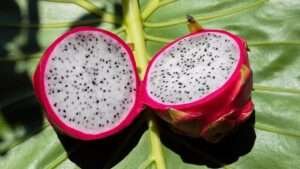This blog post will discuss everything you need to know about growing and caring for lemon plants, from planting the seeds to fertilizing the tree and maintaining its temperature tolerance. Growing a Lemon Plant in A Pot is difficult, but consider many points in your mind.
What you will read in this Blog?
ToggleLatest Posts
- How to Grow Dragon Fruit from Cuttings and Seeds: Best 101 Guide
- Secrets to Successfully Growing a Lemon Plant in A Pot:101% Success
- Top 10 Red and Yellow Flowers with Names: Best Guide
- Growing Olive Tree: 10 Best Tips with FAQs
- Pearls and Jade Pothos ( Epipremnum Aureum): 101 Best Care Guide
- Saffron Plant Best Care 101: Everything You Need to Know
- Shady Lady Black Olive Tree Care Guide: 10 Best Tricks
What is a Lemon Plant?
The lemon plant, or Citrus lemon, is a tiny evergreen tree endemic to South Asia. It is a member of the Rutaceae family and is famous for its acidic yellow fruit, often known as lemons. These fruits are renowned for their refreshing flavor and versatility in the kitchen, from beverages to sweets. Considering its many points, growing a Lemon Plant in A Pot is easy. Please see all instructions for growing a lemon plant in a pot.

Lemon plants, with majestic heights of 10-20 feet, are a sight to behold. Their lustrous, dark green foliage and fragrant white blossoms, which later transform into vibrant yellow lemons, enhance the garden’s beauty. They thrive in warm climates, basking in the sunlight and well-drained soil.
Beyond their culinary charm, lemons are a powerhouse of health benefits. Packed with vitamin C, antioxidants, and other beneficial plant chemicals, they naturally boost our immune system. No wonder they are popular for natural medicines and cosmetic products, offering a holistic approach to health and beauty. Read the complete guide before growing a lemon plant in a pot.
In conclusion, the lemon plant is a well-loved tree known for its tart and tangy fruits, which are delicious and high in nutrients. Read the complete guide before growing a lemon plant in a pot.
What does a Lemon Plant look like?

The lemon plant, formally known as Citrus limon, is a little evergreen tree with glossy green leaves and a unique lemony aroma when crushed. Its look varies slightly depending on age and growing conditions, but it typically has a circular canopy of dense foliage.
The leaves are elliptical, roughly 2 to 4 inches long, with a glossy texture. Lemon bushes also produce fragrant white blooms, which eventually mature into the renowned lemon fruits. When ripe, these fruits have a round to oval form, a bright yellow peel, and acidic juice-rich segments inside. Overall, the lemon plant is a vivid and delightful addition to any garden or orchard environment. Read the complete guide before growing a lemon plant in a pot.
Why do people grow lemons?
People cultivate lemons for a variety of reasons:
Lemons have various culinary applications, including flavoring foods, beverages, and desserts: their zest and juice flavor salads, shellfish, meats, and other dishes.

Health Benefits: Lemons are rich in antioxidants and vitamin C, which boost immunity and general health. Many people incorporate lemon water into their daily regimen because of its purifying and alkalizing characteristics. Read the complete guide before growing a lemon plant in a pot.
Aesthetic Appeal: Lemon trees are lovely decorative plants. Their glossy green leaves and bright yellow fruits visually interest gardens and landscapes.
Lemons have long been a natural remedy for sore throats, coughs, and intestinal difficulties. Due to its antibacterial characteristics, some people use lemon extracts to clean.

Commercial value: Lemons are a profitable crop for farmers and producers. They are in high demand year-round for both consumption and application in cosmetics, fragrances, and cleaning goods.
Overall, cultivating lemons is famous for both gardeners and farmers since it combines practicality, health advantages, and aesthetics. Read the complete guide before growing a lemon plant in a pot.
Introduction to Growing a Lemon Plant in A Pot:
Lemon trees are valued for their colorful fruits, fragrant blooms, and luxuriant foliage. While historically planted in orchards, these adaptable trees flourish in containers, making them ideal for urban gardens, balconies, and patios.
Planting a lemon tree in a pot allows you to experience the beauty and bounty of citrus right from your doorstep. Here’s a step-by-step guide on planting a lemon tree in a pot to produce fruit and thrive in your home garden.
Select the Right Container:
Choosing the right container is essential for the health and growth of your lemon tree. Choose a big container with drainage holes to avoid waterlogging. The optimal size is at least 18-24 inches in diameter and depth, allowing plenty of room for root development.
Consider using lightweight, durable materials like plastic or terracotta to improve mobility and aeration. Read the complete guide before growing a lemon plant in a pot.
Choose the Right Variety:
Each species of lemon tree has unique traits and growth patterns. Select a dwarf or semi-dwarf cultivar suitable for container cultivation, such as Meyer or Ponderosa lemons. These kinds are more compact and controllable, making them ideal for tight places. To maximize growth and fruit production, ensure that your chosen type is compatible with your climate zone.
Choose the Right Soil:
Create a well-drained and nutrient-rich potting mix for citrus plants. An equal mix of potting soil, perlite, and compost provides the best moisture retention and aeration. Add organic matter like compost or aged manure to increase soil fertility and encourage healthy root development. Avoid using heavy garden soil since it can compress and obstruct drainage. Read the complete guide before growing a lemon plant in a pot.
Planting Process:
Moisten the potting mix thoroughly before planting to promote root establishment and settling. Carefully remove the lemon tree from its nursery container, releasing the roots if they appear compressed. Read the complete guide before growing a lemon plant in a pot.
Place the tree in the center of the pot, with the soil level matching the root ball’s height. Fill the remaining space with potting mix, gently pressing it down to remove air pockets. Read the complete guide before growing a lemon plant in a pot. Read the complete guide before growing a lemon plant in a pot.
Proper Watering and Maintenance:
Your lemon tree’s health and vibrancy depend on regular watering. Water deeply but infrequently, allowing the soil to dry somewhat between each watering. Avoid overwatering, as it can cause root rot and other moisture-related problems. Monitor moisture levels regularly, changing watering frequency to reflect environmental conditions and seasonal variations.
Sunlight and Temperature:
Lemon trees need 6-8 hours of direct sunlight daily for best growth and fruit production. Place the pot in a sunny area, such as a south-facing balcony or patio, where it will receive plenty of sunlight throughout the day. Maintain regular temperatures of 70-85°F (21-29°C) to protect the tree from frost and harsh heat during summer.
Fertilization:
Regularly use a balanced citrus fertilizer during the growing season to promote strong growth and fruit production. Use a slow-release or liquid fertilizer every 4-6 weeks from spring to late summer, adhering to the manufacturer’s dose and application guidelines. Avoid using too much nitrogen fertilizer, as it might boost vegetative growth at the price of fruit output. Read the complete guide before growing a lemon plant in a pot.
Pruning and Training:
Pruning helps shape and maintain the structure of your lemon tree, improve airflow, and remove dead or diseased branches. Pruning should be done during the dormant season, usually in late winter or early spring, with clean and sharp pruning shears for precise cuts. Training the tree to a central leader or open center structure should also promote balanced development and fruiting. Read the complete guide before growing a lemon plant in a pot.
What is Special about lemon trees?
The lemon tree provides numerous benefits, making it genuinely unique. Here’s why. Read the complete guide before growing a lemon plant in a pot.
Lemons are an extremely versatile fruit that may be utilized in various ways, including cooking, baking, beverages, and household cleaning goods.
Lemons are a nutritional powerhouse, containing high levels of vitamin C, antioxidants, and essential minerals.
Aromatic Bliss: Lemon blooms have an enticing smell that evokes sensations of freshness and vitality.
Lemon trees delight gardens with glossy green leaves and vivid yellow fruits, giving visual interest to any scene. Read the complete guide before growing a lemon plant in a pot.
Easy to Grow: Lemon trees flourish in various climates and require little upkeep, making them suitable for expert and beginning gardeners.
Lemons have long been valued for their therapeutic characteristics, which include easing sore throats and improving digestion.
Symbol of Vitality: In many cultures, lemon trees represent vitality, longevity, and prosperity, adding to their attractiveness.
The lemon tree is more than just a fruit-bearing plant; it represents health, beauty, and life, nourishing both body and soul. Read the complete guide before growing a lemon plant in a pot.
What fertilizer is best for lemon trees?
The ideal fertilizer for lemon trees has the nutrients required for healthy development and fruit production. Look for a citrus-specific fertilizer with balanced nitrogen, phosphorus, and potassium (NPK) ratio. Furthermore, lemon trees benefit from micronutrients such as magnesium, zinc, and iron. Compost, manure, and fish emulsion are all viable organic alternatives. Always follow the manufacturer’s application rate and time guidelines to avoid over-fertilization. Read the complete guide before growing a lemon plant in a pot.
What is the best food for lemon trees grown in pots?
Lemon trees grown in pots require special care to thrive and bear juicy, fragrant fruits. The appropriate nutrients are essential for their health and productivity. Here are the finest foods for your potted lemon trees:
Citrus-specific fertilizer:
Choose a citrus-specific fertilizer. These fertilizers are designed to suit the specific nutritional requirements of lemon trees. These nutrients are Nitrogen, Phosphorus, and Potassium. Read the complete guide before growing a lemon plant in a pot.
Nitrogen-Rich Fertilizers:
Lemon trees require high Nitrogen, particularly during their active growth stages. Select a good nitrogen fertilizer if you want fast growth.
Organic Compost:
Adding organic matter to the soil can increase its structure, fertility, and moisture retention capacity. Compost contains helpful microbes and nutrients that improve overall plant health and resilience.
Lemon trees can benefit from occasional applications of Epsom salt. Epsom salt contains magnesium, an essential ingredient for chlorophyll formation and photosynthesis. So dissolve it, mix it in water, and spray it on a lemon tree.
pH-Adjusted Soil Mix:
Lemon trees prefer slightly acidic soil ranging from 5.5 to 6.5. To obtain the proper pH level, use a citrus-specific mix or modify standard potting soil with peat moss or pine bark.
Slow-release fertilizers:
Consider utilizing slow-release fertilizers to ensure your lemon tree receives consistent nutrients throughout time. These fertilizers gradually release nutrients, lowering the risk of nutrient leaching and reducing the need for repeated applications. Read the complete guide before growing a lemon plant in a pot.
Fish Emulsion:
Fish emulsion is a natural fertilizer that provides Nitrogen, phosphate, and trace minerals to lemon trees. It comes from fish waste and is easily absorbed by plants, encouraging healthy growth and fruit development.
Important Note:
Remember to adhere to the recommended application rates and frequency mentioned on the fertilizer container, and constantly thoroughly water your lemon tree after fertilization to avoid root burn. Your potted lemon plant will grow faster with the proper fertilizers and care.
Growing a Lemon Plant in a Pot, but how?
Saving a lemon tree in a pot needs meticulous attention to detail and care. Here’s a quick guide to help you out:
Select the Right Pot: To avoid waterlogging, choose a big pot for planting. Use an 18-inch pot in diameter with drainage holes.
Well-Draining Soil: Combine potting soil with perlite or sand to guarantee proper drainage and aeration for the roots.
Sunlight: Lemon trees adore sunlight. Place your pot in a sunny location where it will receive at least 6-8 hours of sunlight daily.
Soaking: Water your lemon tree regularly, but allow the soil to dry somewhat between each soak. Overwatering can cause root rot.
Fertilization: Feed your lemon tree with a balanced citrus plant fertilizer during the growing season.
Pruning: Remove diseased or dead branches from your lemon tree and keep it in shape. This promotes healthy development and fruit production.
Pest and Disease Control: Use neem oil to spray the plant for infectious diseases. Also, look for symptoms of diseases like citrus canker or citrus greening and take the necessary precautions to avoid or manage them.
Frost Protection: If you live in a cold climate, bring your lemon tree indoors or apply frost protection during cool nights to avoid tree damage.
Follow these procedures to save your lemon tree in a pot and reap a bumper harvest of fresh, homegrown lemons. Read the complete guide before growing a lemon plant in a pot.
What fertilizer is best for citrus trees?
Certainly! The best fertilizer for citrus trees is one that is specifically designed for their needs. Look for a fertilizer that contains a balanced N-P-K ratio (nitrogen, phosphorous, and potassium), as well as micronutrients such as iron, zinc, and magnesium.
Choose a slow-release fertilizer to deliver nutrients gradually over time. To support long-term soil health and microbial activity, consider using organic fertilizers like compost or manure. Remember to carefully follow the application directions to avoid overfertilization, which can be harmful to your citrus trees. Read the complete guide before growing a lemon plant in a pot.
What are the benefits of lemons?
Certainly! Lemons are a powerhouse of nutrients; here’s a summary of their advantages:
Lemons are high in vitamin C, which improves the immune system, promotes collagen production for healthy skin, and aids with iron absorption.
Alkalizing Properties: Despite their acidic flavor, lemons have an alkalizing impact on the body, which can help balance pH and enhance general health.
Drinking lemon water or juice can encourage the formation of stomach acid, which aids digestion and relieves symptoms of indigestion or bloating.
Lemons are low in calories and can be an excellent complement to a weight loss program. The high fiber content and presence of pectin may also aid with cravings.
Hydration: Adding lemon slices to water improves its flavor and promotes hydration, which is critical for overall health and well-being.
Lemons include antioxidants such as flavonoids, which assist in neutralizing free radicals in the body, lowering the risk of chronic disease and inflammation.
Freshens Breath: Lemons’ citric acid can help eliminate bacteria in the mouth, resulting in fresher breath and reducing oral health disorders like gingivitis.
Lemon juice, whether applied topically or consumed internally, can improve skin health due to its vitamin C content, which aids in collagen synthesis and brightens the complexion.
Natural Cleanser: Lemon juice, a natural astringent, can be used to gently cleanse the skin. It also serves as a detoxifier, aiding in the elimination of impurities from the body.
Lemons are a versatile ingredient that may be used in a variety of culinary preparations, including salad dressings, marinades, desserts, and beverages, to add tart taste and nutritional value to dishes.
Summary
Lemon plants are famous for home gardeners due to their vibrant foliage and fragrant blooms. These citrus trees are relatively easy to care for but require some specific attention to ensure they thrive.
This blog post will discuss everything you need to know about growing and caring for lemon plants, from planting the seeds to fertilizing the tree and maintaining its temperature tolerance. Growing a lemon plant from seed can be a rewarding experience, but it does require patience and attention to detail. To start, you must gather fresh lemon seeds from ripe fruit and remove any pulp or flesh from the seeds.
Next, plant the seeds in a well-draining potting mix and keep the soil moist until the seeds germinate. It can take several weeks for lemon seeds to sprout, so be patient and keep the soil warm and wet to encourage growth. Once your lemon plant has established itself, providing the proper care to ensure its health and vitality is essential.
Lemon plants require regular watering to moisten the soil but prefer to avoid sitting in soggy conditions. Be sure to allow the soil to dry out slightly between waterings to prevent root rot.
Additionally, lemon plants benefit from regular fertilization to promote vigorous growth and abundant fruit production. A balanced fertilizer formulated for citrus trees can help provide the nutrients your lemon plant needs to thrive. In addition to proper watering and fertilization, lemon plants require the right temperature conditions to thrive.
Lemon plants are cold-sensitive and should be protected from frost or freezing temperatures. If you live in a cooler climate, consider bringing your lemon plant indoors during winter or using a frost cloth to protect the tree. Lemon plants prefer temperatures between 60-70 degrees Fahrenheit, so provide adequate warmth and sunlight to keep your plant healthy.
If you are growing a lemon plant in a pot, there are some additional considerations to remember. Ensure the pot has suitable drainage holes to prevent waterlogging, and use a well-draining potting mix to promote healthy root growth. Lemon plants also benefit from being placed in a sunny location with at least six hours of sunlight daily.
Rotate the plant regularly to ensure even development and prevent the leaves from becoming sunburned. In addition to providing the proper care and conditions for your lemon plant, there are also some benefits to growing these citrus trees indoors. Lemon plants can help purify the air in your home by absorbing toxins and releasing oxygen.
The fragrant flowers and fruits of the lemon plant can also add a pleasant aroma to your living space, creating a calming and refreshing atmosphere. Overall, growing and caring for a lemon plant can be a rewarding experience for home gardeners. By following these tips and guidelines for lemon plant care, you can enjoy the beauty and benefits of these citrus trees in your home.
From planting the seeds to fertilizing the tree and maintaining its temperature tolerance, there are many factors to consider when growing a lemon plant. With the proper care and attention, your lemon plant can thrive and provide fresh fruit and a touch of natural beauty in your home.
Conclusion
Planting a lemon tree in a pot is a gratifying venture that brings the beauty and wealth of citrus into your house. Following these recommendations and taking adequate maintenance, you may grow a robust lemon tree that delights with fragrant blossoms and luscious fruits all year. With patience and devotion, you’ll soon enjoy your garden’s freshness of homegrown lemons.







